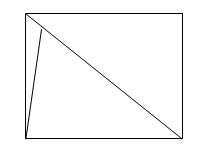teacher of Russian language and literature
MBEU "Russian-Tatar SOSH No. 136" Kazan
Class: 6(This class can be adapted to other classes)
Type of lesson:repetition
Goals:To summarize and repeat the knowledge about the work of M.Y. Lermontov; to develop the ability to see the beauty of the works of Russian culture, to understand the state of mind of other people, to develop the ability to work in a team, the ability to listen, analyze poetic texts, to argue their own point of view.
Didactic material:cards with tasks, illustrations with portraits of M.Y. Lermontov and images of his works, a reproduction of Shishkin’s painting “In the Wild North”, several oak leaves.
The desks are arranged so that 4-6 students sit at one table (depending on the number of students in the class).
Intra-subject relationships: graphic and expressive means, genre of poem.
Intersubject linkagesfine arts
Methods and techniques:the basis of this lesson is joint learning, focused on equal active participation of all students; verbal drawing, conversation.
Class progress:
The teacher welcomes students, formulates the theme and goals of the lesson.
1 mission:On each table there are cards with the names of objects of the Lermontov era (or the objects themselves), your task is to present the object, tell what it is needed for, which hero could belong (the following items are listed on the cards: pen, dagger, kivera (a warrior’s headdress of 1812), etc.). For example, the pen was necessary for writing, its tip was lowered in ink, it could belong to the writer himself; the kivere was dressed by warriors, by its appearance it was possible to determine the regiment of a warrior, this object could belong to the heroes of Borodino. The task is discussed by the team, then a defendant is selected, who voices a common opinion.
2 mission:Each student has a piece of paper with a task. It is necessary to correlate the stages of Lermontov’s life and the place of Russia.
Correct answers:
| Tarhana's estate | Penza region |
| Noble boarding house | Moscow |
| Juncker school | Petersburg |
| Reference to a poem "The Death of a Poet" |
Caucasus |
The teacher asks to exchange works with each other, voices the right answers. The children give each other assessments.
{module Google_kvadrat}
3 assignment: on the tables oak leaf (real or painted), it is necessary to discuss in the team and answer, from what piece of Lermontov this object, what it symbolizes, remember the lines associated with it. When surveying, it should be remembered that the easiest task is for the team answering the first, and the most difficult is for the last. The teacher has to make sure that the person in charge of the team is different.
4 assignment: work with a reproduction of Shishkin's painting "In the North Wild". The ability to see the composition, the color of the picture, the artist's idea, the ratio with the poem of the same name by Lermontov is evaluated.
5 task: work with the texts of poems (selection of works at the discretion of the teacher). It is necessary to write out visual and expressive means with the help of which the author conveys his feelings, emotions. Each team works on its own text, then voices its opinion. Other teams correct or supplement the response. Then he voices his.
6 assignment: the words are written on the board: a leaf, a sail, a sea, a cliff (or their images are projected), the team’s task is to collectively choose one (word) from them, tell about the meaning of this image in Lermontov’s work, give examples from texts.
The teacher sums up the lesson, sets grades (takes into account the answers of students, their work in the team, written assessments, exhibited on the results of the second task).
reflection. Students are invited to write their impressions of the lesson and wishes on pieces of paper in the form of sheets of wood. The leaves are attached to a painted tree trunk. Teacher: Today we have planted a tree of knowledge, and it is up to you whether it will continue to grow. For the tree to bear fruit, do your homework.” (Homework is given according to the program in which the teacher works.)


